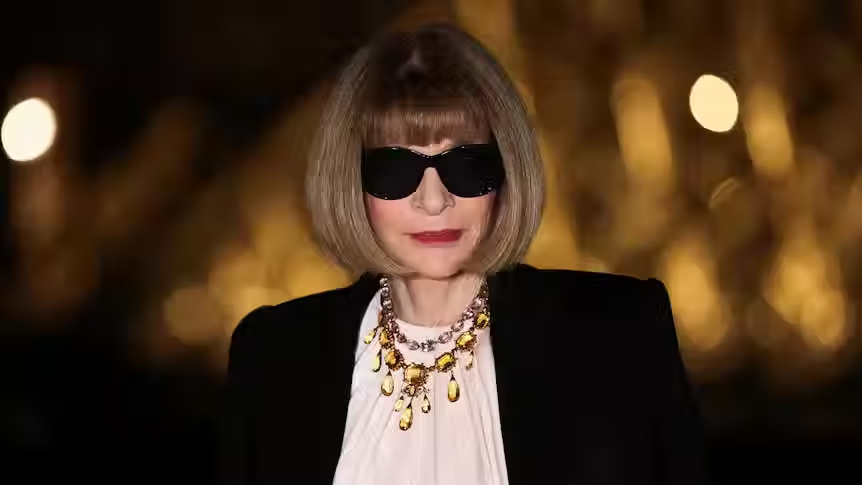Anna Wintour Steps Down: The End of an Iconic Era at Vogue
- Jomanda Heng
- Jul 6
- 4 min read
After decades at the helm, the fashion world prepares to turn the page

After more than three decades defining fashion’s most powerful publication, Anna Wintour is officially stepping down from Vogue. Her departure marks the end of an era—one stitched together by visionary leadership, ruthless excellence, and a keen instinct for what makes culture tick.
The Woman Who Shaped Fashion Media
Appointed Editor-in-Chief of Vogue in 1988 and later elevated to Chief Content Officer of Condé Nast, Wintour didn't just oversee fashion—she dictated it. With her signature bob, dark sunglasses, and commanding presence, Wintour turned Vogue into a cultural bible, elevating models into icons, designers into legends, and runway trends into global movements.
She transformed the September issue into fashion's holy grail, launched initiatives like the CFDA/Vogue Fashion Fund to support emerging designers, and played a pivotal role in elevating the Met Gala from a niche fundraiser to a global spectacle.
Shaping the Fashion World: More Than Just a Magazine
Under Wintour’s reign, Vogue was no longer just a monthly fashion publication—it became the fashion authority. She redefined editorial power in the industry by treating Vogue as a platform for cultural influence. Her covers were more than photoshoots; they were statements of who mattered in fashion, politics, entertainment, and activism.
She helped normalize the crossover between celebrity and high fashion, putting actresses and pop stars on covers—like Nicole Kidman, Rihanna, and Beyoncé—at a time when that was considered editorial taboo. This not only broadened Vogue’s appeal but also redefined fashion’s gatekeepers.
She also used the platform to launch careers. Designers like Alexander McQueen, Marc Jacobs, and John Galliano were elevated with Wintour’s backing. Photographers such as Mario Testino and Annie Leibovitz thrived under her editorial vision. Her support gave them creative freedom and industry stature.
Even retail was impacted—Wintour’s influence dictated trends that would trickle down into department stores and fast fashion within weeks. If Vogue said a colour, cut, or silhouette was in, the world followed.
She also championed fashion as a form of activism, publishing issues around sustainability, LGBTQ+ rights, and social justice. In recent years, Vogue began featuring more diverse body types, ethnicities, and narratives—an evolution that mirrored the shifting global audience and Wintour’s growing awareness of fashion’s responsibility.
A Legacy of Change and Controversy
Wintour’s Vogue evolved from a platform of high-society elitism to one that cautiously embraced diversity and digital innovation. She was responsible for giving celebrities like Kim Kardashian and Serena Williams their first major fashion covers and promoting models of colour in an industry long criticized for its lack of inclusivity.
However, she wasn’t free from criticism. Staff and industry voices increasingly challenged her leadership for its slow response to calls for systemic change, particularly around race and representation. In 2020, Wintour herself publicly acknowledged Vogue’s failure to support Black creatives and vowed to do better.
While Wintour has not issued a formal reason for her departure, sources indicate her decision coincides with Condé Nast’s broader digital and organizational transformation, as well as the rising demand for generational change in leadership. It’s likely a strategic exit—leaving while still in control of her legacy rather than risk being swept out by the tides of culture and criticism.
Wintour’s eye for aesthetics, trendspotting genius, and unapologetic decision-making helped Vogue maintain prestige even as print media crumbled. She had the power to catapult a designer into stardom or rebrand a celebrity with one cover.
More than that, Wintour had the trust of fashion’s elite. Her Rolodex included presidents, CEOs, supermodels, and pop stars, making her not just an editor but a cultural diplomat. Her departure leaves a significant vacuum in both influence and access.

What's Next?
Her successor has yet to be named, but the fashion world is abuzz with speculation. Will it be a Condé Nast insider? A bold Gen Z visionary? Whoever it is will face the challenge of making Vogue resonate in a landscape shaped by TikTok, AI, and sustainability movements.
As for Wintour, insiders suggest she may shift her focus to other roles, potentially taking a larger stake in arts institutions like the Met or launching her own curated ventures.
Conclusion: A Farewell to Fashion’s Queenmaker
Anna Wintour’s resignation is more than a corporate announcement—it’s the closing of a chapter in fashion history. Her vision built Vogue into the industry’s north star, her eye defined what beauty looked like for decades, and her legacy will shape the next generation of fashion, whether on the cover or behind the scenes.
References:
BBC News (2025). Anna Wintour to step down as Vogue’s editor-in-chief after 35 years.
New York Times (2025). The Anna Wintour Era Ends at Vogue.
Business of Fashion (2023). Anna Wintour and the Future of Condé Nast.
Vogue (2020). Anna Wintour on Diversity and Representation at Vogue.
The Guardian (2022). The Making of the Met Gala: How Anna Wintour Turned Fashion into Spectacle.
The Uncommon Breed



Comments